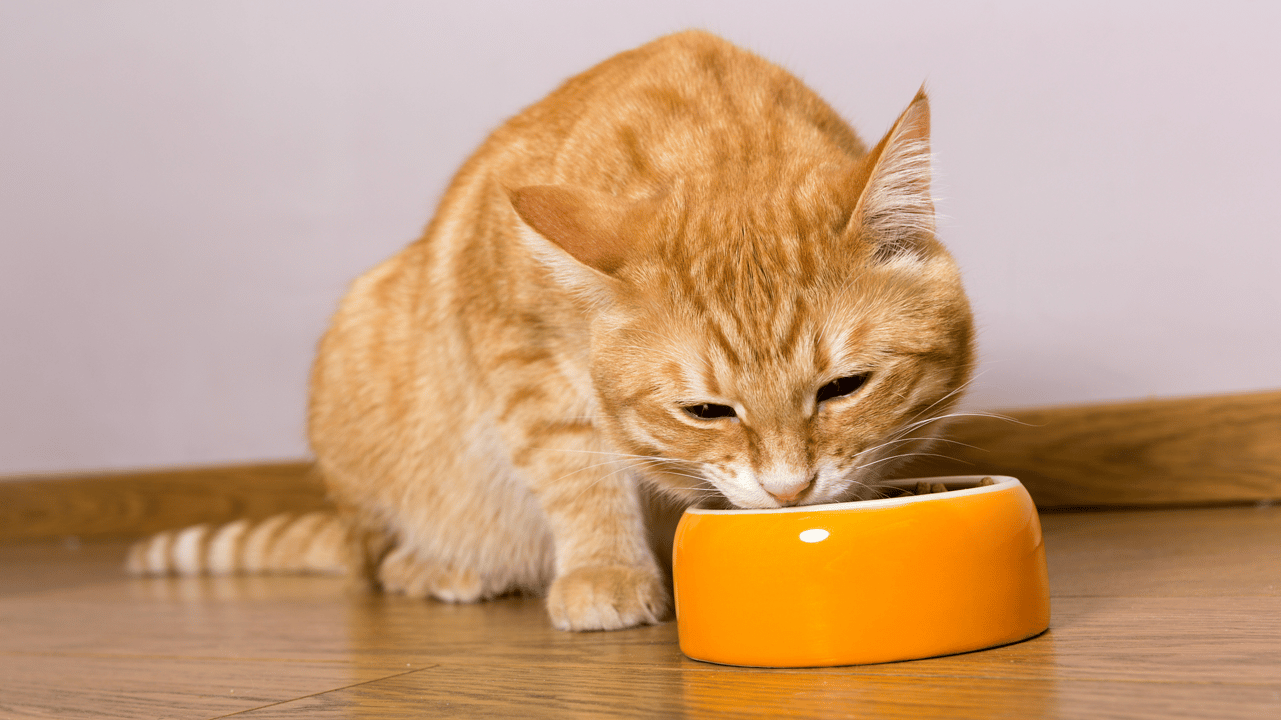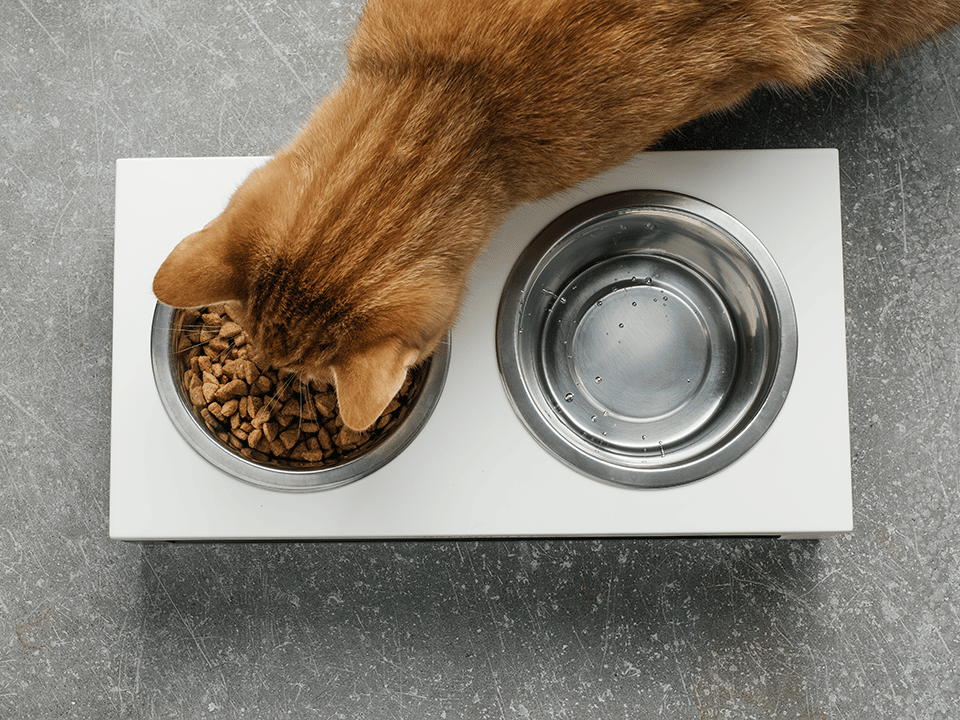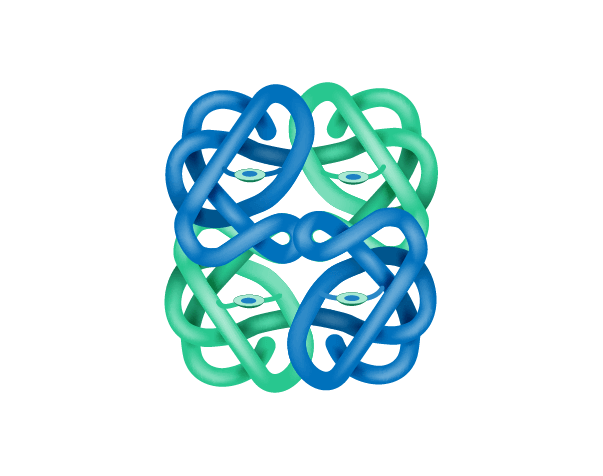
Cats require some nutrients that are not essential for other mammals. Many of these essential nutrients are found naturally in animal tissues, reflecting that cats have developed specialised nutrient requirements consistent with the evolutionary influence of being strict carnivores (MacDonald et al., 1984).
In addition, when feeding cats, the nutritional composition and the palatability of the diet are crucial. If unpalatable, cats will refuse to eat and consequently may become deficient in essential nutrients, leading to clinical conditions (Zaghini & Biagi, 2005). This highlights the importance of formulating and feeding highly palatable, nutritious diets for cats.
How much protein do cats require?
In the wild, cats would consume a diet of small animal prey, which provides a diet rich in animal protein containing all the essential amino acids (AA) cats require. Studies have determined that today’s pet cats, supplied with complete food in a bowl, have a minimum dietary protein requirement of 25 – 33 g/100g DM (dry matter), depending on their energy requirements (FEDIAF, 2021). This protein requirement is significantly greater than the protein requirement for omnivorous animals, such as dogs and reflects that cats are metabolically adapted to utilise protein/Amino acids to meet their metabolic needs, e.g., direct oxidation for energy and synthesis of glucose (gluconeogenesis) (Russell et al., 2002; Eisert, 2011).

Which essential amino acids do cats require?
Amino acids are the building blocks of proteins. They are categorised as nutritionally essential Amino acids (must be supplied in the diet) or non-essential Amino acids (synthesised de novo in the body). Adequate supplies of essential Amino acids and non-essential Amino acids are required to maintain optimum health. When formulating a cat’s diet, it is important not just to consider the total protein content or protein digestibility but also to focus on the Amino acids profile of the protein source. Essential Amino acids must be obtained within the diet. Cats and dogs share ten essential Amino acids required in their diet (arginine, histidine, isoleucine, leucine, lysine, methionine, phenylalanine, threonine, tryptophan and valine) (FEDIAF, 2021).

Dietary arginine is significantly important for cats. Both cats and dogs show signs of hyperammonaemia when fed an arginine-free diet, as arginine is involved in removing ammonia from the body. Hyperammonaemia is the elevation of ammonia in the blood and can cause vomiting, weight loss and lethargy. Arginine deficiencies are more severe in cats as a single arginine-free meal can result in clinical symptoms of ammonia toxicity within 2-5 hours of consumption (Morris & Rogers, 1978).
In addition to the 10 essential Amino acids shared with dogs, cats additionally require the sulphur-containing Amino acid taurine. This compound is of fundamental importance in pet diets, particularly in cats, as it is involved in the transmission of nerve impulses, synthesis of bile acid and reduction of muscle damage from oxidative stress. Cats have a limited ability to synthesise taurine. Therefore dietary taurine is essential to ensure the requirement is met (Verbrugghe & Bakovic, 2013). In addition, they rely almost exclusively on taurine (rather than utilising the Amino acid glycine) to conjugate bile acids into bile salts, resulting in an obligate loss of taurine in bile. Inadequate supplies of dietary taurine can cause serious physiological problems, for example, retinal degeneration (Hayes et al., 1975) and dilated cardiomyopathy (Pion et al., 1987). Conversely, taurine is not an essential Amino acid in dogs as they have the capacity to synthesise sufficient amounts of taurine from the sulphur-containing Amino acids cysteine and methionine (NRC, 2006).
Both arginine and taurine are found naturally in animal products, highlighting the importance of animal tissues in the cat’s diet.
Why are lipids essential and which fatty acids do cats require?
Lipids constitute a group of organic molecules, which include fats and oils. Dietary lipids are a source of essential fatty acids and concentrated energy since fat provides twice the amount of calories per gram compared to protein and carbohydrates. Lipids play an important role as carriers for fat-soluble vitamins and sterols and are components of many hormonal precursors. Additionally, they are utilised to improve the palatability and textural properties of dry kibble (Trevizan & Kessler, 2009).
Fatty acids are integral components of lipids. The essential nature of a fatty acid is primarily due to an animal’s inability to synthesise it in sufficient quantities to meet its metabolic needs (Bauer, 2008). Cats, like dogs, require the essential fatty acid linoleic acid. Linoleic acid is a polyunsaturated omega-6 fatty acid. Fatty acids can be elongated and desaturated into alternative, longer-chained fatty acids. For example, dogs readily convert linoleic acid into arachidonic acid by the enzyme Δ6-desaturase. However, cats are unable to do this as conversion is limited due to the low activity of the enzyme Δ6-desaturase in the cat’s liver. As a result, arachidonic acid is an essential fatty acid in cats and must be obtained in the diet. Arachidonic acid is found in abundant supply in animal tissues, especially the organs (Trevizan et al., 2012). This reinforces the requirement for cats, as obligate carnivores, to consume animal tissues in order to meet their nutritional needs.
Do cats require specific vitamins?
Vitamins are organic compounds required only in small quantities and are classed as essential micronutrients. As they are not endogenously synthesised, they must be obtained from the diet. Vitamins have diverse biochemical functions, which are necessary for the maintenance of normal health and metabolic integrity. The dietary requirements of cats for specific vitamins differ from those of most other mammals. These particularities result from significant differences in enzyme activities during the synthesis of niacin (vitamin B3) and vitamin A (NRC, 2006).
Dietary niacin is essential in cats as niacin (and associated compounds including nicotinic acid and nicotinamide adenine dinucleotide, NAD) plays a fundamental role as coenzymes in the metabolism of carbohydrates, amino acids, and ketone bodies in cats. Cats, unlike dogs, cannot synthesise significant levels of niacin from the essential amino acid tryptophan. This is due to a very high activity level of an enzyme (picolinic carboxylase) that rapidly converts a metabolite of tryptophan to form acetyl-CoA rather than niacin, resulting in insufficient production of niacin. As a result, the niacin requirement of cats is 2.4 times higher than that of dogs (NRC, 2006).
Similarly, cats require dietary, pre-formed vitamin A. Vitamin A is essential for vision, cellular differentiation, and immune function in cats. Carotenoids, for example, β-carotene, are precursors for vitamin A. They are synthesised by plants and, therefore, are commonly found in vegetables, such as carrots and sweet potatoes. In comparison, animal tissue contains relatively low concentrations of carotenoids and adequate amounts of vitamin A. As obligate carnivores, cats lack the enzyme required to produce vitamin A from β-carotene, and although they can absorb β-carotene, they cannot convert it to vitamin A (Schweigert et al., 2002). Dietary pre-formed vitamin A is only essential in cats, as dogs have the enzymes necessary for converting carotenoids (Zaghini & Biagi, 2005).
Summary
As obligate carnivores, cats rely heavily on nutrients readily found in animal tissues. It is important that cats are fed high-protein diets that contain essential amino acids. In addition to the essential amino acids shared with dogs, cats require taurine, which is found in animal-origin ingredients. High concentrations of the essential fatty acid arachidonic acid found in animal tissue reinforce this requirement for nutrients, specifically from animal products. Finally, cats require dietary vitamins that other mammals can endogenously synthesise. Examples of these include niacin and preformed vitamin A.
References
- Bauer, J. E. (2008). Essential fatty acid metabolism in dogs and cats. Revista Brasileira de Zootecnia, 37, 20-27.
- Eisert, R. (2011). Hypercarnivory and the brain: protein requirements of cats reconsidered. Journal of Comparative Physiology B, 181(1), 1-17.
- FEDIAF. (2021). Nutritional Guidelines for Complete and Complementary Pet Food for Cats and Dogs. European Pet Food Industry Federation, Brussels.
- Hayes, K. C., Carey, R. E., & Schmidt, S. Y. (1975). Retinal degeneration associated with taurine deficiency in the cat. Science, 188(4191), 949-951.
- MacDonald, M. L., Rogers, Q. R., & Morris, J. G. (1984). Nutrition of the domestic cat, a mammalian carnivore. Annual Review of Nutrition, 4(1), 521-562.
- Morris, J. G., & Rogers, Q. R. (1978). Ammonia intoxication in the near-adult cat as a result of a dietary deficiency of arginine. Science, 199(4327), 431-432.
- NRC (National Research Council). (2006). Nutrient requirements of dogs and cats. National Academies Press, Washington, DC.
- Pion, P. D., Kittleson, M. D., Rogers, Q. R., & Morris, J. G. (1987). Myocardial failure in cats associated with low plasma taurine: a reversible cardiomyopathy. Science, 237(4816), 764-768.
- Russell, K., Murgatroyd, P. R., & Batt, R. M. (2002). Net protein oxidation is adapted to dietary protein intake in domestic cats (Felis silvestris catus). The Journal of Nutrition, 132(3), 456-460.
- Schweigert, F. J., Raila, J., Wichert, B., & Kienzle, E. (2002). Cats absorb β-carotene, but it is not converted to vitamin A. The Journal of Nutrition, 132(6), 1610S-1612S.
- Trevizan, L., & Kessler, A. M. (2009). Lipids in dogs and cats’ nutrition: metabolism, sources and application in practical and therapeutic diets. Revista Brasileira de Zootecnia, 38, 15-25.
- Trevizan, L., Kessler, A. M., Brenna, J. T., Lawrence, P., Waldron, M. K., & Bauer, J. E. (2012). Maintenance of arachidonic acid and evidence of Δ5 desaturation in cats fed γ-linolenic and linoleic acid enriched diets. Lipids, 47(4), 413-423.
- Verbrugghe, A., & Bakovic, M. (2013). Peculiarities of one-carbon metabolism in the strict carnivorous cat and the role in feline hepatic lipidosis. Nutrients, 5(7), 2811-2835.
- Zaghini, G., & Biagi, G. (2005). Nutritional peculiarities and diet palatability in the cat. Veterinary Research Communications, 29(2), 39-44.

Charlotte Stainer
GA Pet Food Partners Junior Pet Nutritionist
Charlotte is a Junior Pet Nutritionist at GA Pet Food Partners. Charlotte graduated from Newcastle University with a BSc in Marine Biology and subsequently completed a Masters in Animal Nutrition at the University of Nottingham, where she focused on companion animal nutrition. Outside of work, Charlotte loves to travel and spend time outdoors. She also enjoys running and going to the gym.
You may also like...
Article written by Charlotte Stainer
The Pros and Cons of AI in Pet Retail
You may have frequently encountered the term “AI” or “AI technology” in the media. From unlocking your phone using Face ID, asking for directions on your [...]




